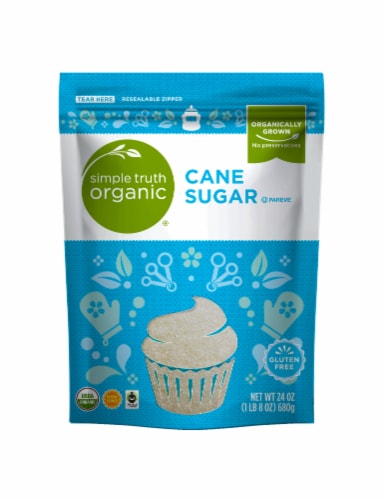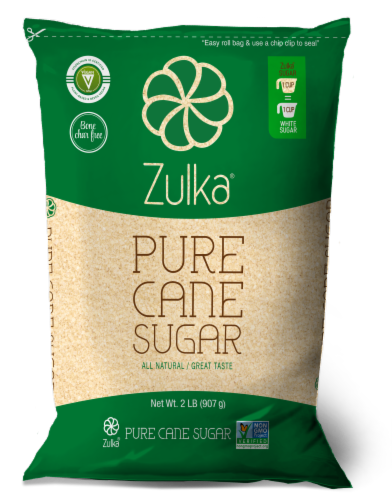Understanding the Essential Techniques and Technologies Used in Modern Cane Sugar Handling
The evolution of walking stick sugar processing has actually been considerably shaped by the assimilation of advanced techniques and modern technologies that address both performance and sustainability. Enzyme-assisted removal and advanced refining techniques have changed return optimization, while automation helps with operational dependability. In addition, the emphasis on lasting techniques reflects an expanding awareness of environmental impact. As we check out these vital innovations, it becomes important to examine how they not just enhance production yet likewise straighten with wider sector fads and customer needs, questioning about the future of sugar processing and its effects for international markets.
Historic Context of Walking Cane Sugar Handling
The historical context of walking cane sugar processing discloses a rich tapestry of agricultural development and cultural exchange that has shaped its growth over centuries. The procedure of fine-tuning and extracting sugar got momentum in India, where techniques for condensation were perfected around the Sixth century.

Advanced Removal Methods
Effectiveness in walking cane sugar extraction has seen substantial developments, driven by the demand for higher yields and reduced manufacturing costs. Typical methods have advanced, giving method to innovative innovations that boost the effectiveness of the extraction process. One remarkable innovation is the usage of enzyme-assisted extraction, in which certain enzymes break down cell walls and release more sucrose from the cane fibers. This technique not only raises sugar yield but likewise minimizes the energy required for processing.
Additionally, the fostering of membrane layer filtering modern technologies, such as nanofiltration and reverse osmosis, has revolutionized the separation of sugar from impurities. These methods allow for the selective permeation of sugar molecules while maintaining larger pollutants, enhancing the removal procedure and lessening waste.
In addition, the assimilation of continuous extraction systems has caused enhanced operational efficiency. Cane Sugar Processing. These systems maintain a consistent circulation of walking stick material, guaranteeing optimal removal problems and decreasing downtime related to batch processing
Innovative Refining Technologies
Refining techniques in cane sugar processing have actually undertaken a transformative shift, driven by the need for higher pureness and enhanced item quality. One of one of the most significant innovations is the fostering of membrane purification innovations, such as ultrafiltration and nanofiltration. These processes successfully remove impurities and colorants without the requirement for comprehensive chemical therapies, thus maintaining the sugar's natural taste and enhancing its charm.
Another considerable advancement is using ion exchange resins, which enable careful elimination of undesirable ions from sugar services. This technology not just boosts the overall pureness of the end product yet also adds to decreased waste and site link environmental influence.
Additionally, improvements in adsorption techniques, using activated carbon and various other advanced materials, have actually verified effective in decolorizing sugar remedies while preserving ideal quality. The assimilation of these innovative refining technologies makes sure that manufacturers can produce polished sugar with premium clearness and taste, meeting the developing choices of customers.
Automation and Control Equipment
Current developments in refining innovations have look what i found actually led the way for substantial improvements in automation and control systems within cane sugar processing facilities. These systems use advanced software program and hardware to enhance operational effectiveness, lower human error, and guarantee constant item top quality.
Modern automation incorporates numerous elements, consisting of sensors, actuators, and programmable reasoning controllers (PLCs), enabling real-time tracking and control of crucial procedures. For example, pressure, temperature, and flow prices can be specifically managed throughout extraction, information, and condensation stages, optimizing performance and minimizing waste.
Moreover, progressed information analytics and device learning formulas play a crucial function in predictive upkeep, permitting drivers to prepare for devices failures before they occur. This proactive strategy not just lowers downtime yet likewise extends the life-span of machinery.
On top of that, automation assists in the implementation of Sector 4.0 principles, encouraging sugar mills to accomplish better connectivity and information exchange across procedures. As an outcome, decision-making becomes even more educated and agile, ultimately boosting the general competitiveness of walking cane sugar manufacturing. With these improvements, the market is well-positioned to meet expanding worldwide needs while keeping functional excellence.
Sustainability Practices in Sugar Production
Sustainability techniques in sugar production have become increasingly crucial as the market seeks to stabilize financial viability with environmental duty. As customer awareness expands pertaining to the ecological influences of farming techniques, sugar manufacturers are embracing innovative techniques to minimize their eco-friendly impact.
One significant method is the application of accuracy farming strategies, which utilize data analytics to enhance resource usage, such as water and plant foods. This lowers waste and decreases the impact on regional communities. Moreover, many producers are transitioning to renewable resource resources, such as biomass from sugarcane byproducts, to power their operations, therefore reducing dependence on nonrenewable fuel sources.
Water administration practices are additionally important; rain harvesting and effective watering systems aid reduce water shortage issues. Cane Sugar Processing. Additionally, incorporated parasite management approaches reduce chemical use, advertising biodiversity and soil health and wellness
Business social duty campaigns are emerging, with companies investing in regional neighborhoods and making certain reasonable labor techniques. By welcoming these sustainability practices, the sugar see this page market not only improves its credibility however additionally adds to an extra lasting farming landscape, paving the method for future generations.

Conclusion
In summary, modern-day walking stick sugar handling incorporates an array of innovative techniques and technologies that substantially enhance yield, sustainability, and efficiency. The fostering of cutting-edge removal and refining approaches, along with automation and control systems, facilitates improved functional efficiency and item top quality. Moreover, the focus on lasting techniques emphasizes a dedication to decreasing ecological influence and advertising moral production. Jointly, these advancements place the cane sugar industry to meet contemporary demands while attending to essential global challenges.
The evolution of walking cane sugar handling has actually been substantially shaped by the combination of advanced methods and technologies that address both effectiveness and sustainability.The historical context of cane sugar processing discloses an abundant tapestry of farming advancement and social exchange that has actually formed its advancement over centuries. Innovations in milling and refining arised, laying the groundwork for modern cane sugar processing.Refining techniques in cane sugar processing have actually gone through a transformative change, driven by the demand for greater pureness and enhanced item quality.In recap, contemporary cane sugar handling incorporates an array of advanced methods and technologies that substantially enhance effectiveness, return, and sustainability.
Comments on “Cane Sugar Processing: From Field to Table-- A Step-by-Step Overview”